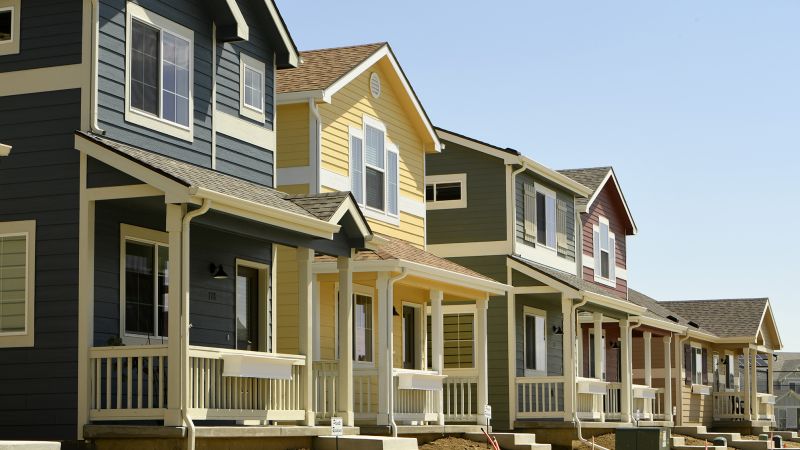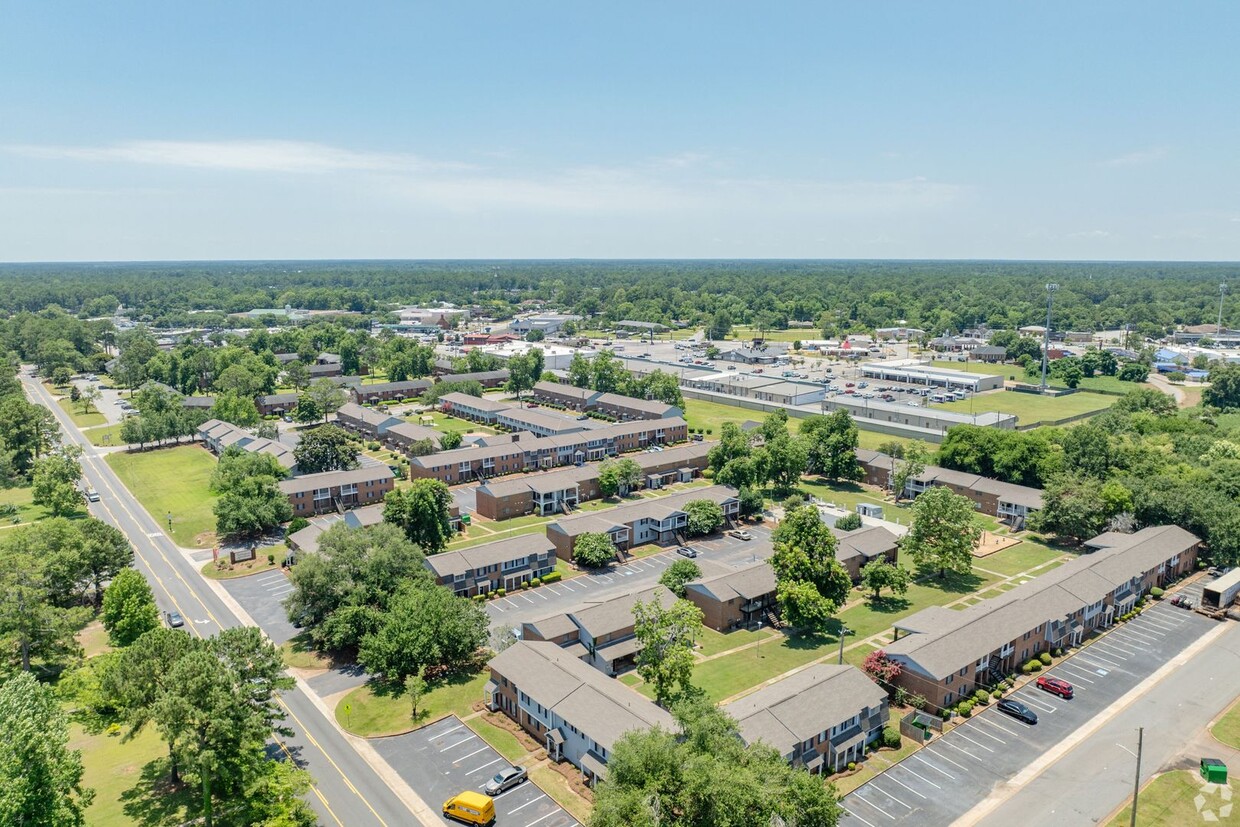Multifamily Market Update + Where to Find Deals NOW Part 2
Multifamily Market Update + Where to Find Deals NOW Part 2
So in Part 1 we left off where what we are seeing right now with all of this new supply. Is that property owners, management companies, or for the lack of a better way to put it, getting folks in the building. In doing so what they’re doing is they’ve been offering pretty large concessions, and with those concessions, it’s pulled some of the folks able to trade up from B to some of those A and it’s actually caused a little bit of an increase in the Class B vacancy rate. Now, with that said, there’s still a pretty large shortage of what we often call workforce housing. So we think this is more temporary. As household formation picks up as we move over the next 3, 5, 7 years, we’ll see new supply of that class A pull back a bit, and then you’ll see those markets come in balance.
We do think we have a temporary hit to some of that class B as the property owners are trying to get more and more folks in that class A. So we’re still seeing record completions or near record completions through the end of this year. But if you look at the pipeline, where at Moody’s track permits, they look at satellite imagery to see when construction has begun and how it’s progressing. you’ll see it much slower, late 2025 and 2026 is gonna be tremendously slower. So all of those that have a high financing cost and all of the glut of new supply as well as the sluggish rents are going to take their toll. Again, it kind of goes back to this timing problem within real estate. This isn’t like we’re building a widget that can be created to just run the factory another hour that day and I produce another 10,000 widgets and sell them because the market wants them. There will be a lot of money, and a lot of interest and activity for multifamily. All these developers and investors are gonna do it at once and it’s gonna come online in four to five years. And then the demand dries up a little bit and then we go through this period, right where we said it would, the rent levels will balance along with growth.
It is so hard to time the market, especially when you’re a developer of large things. It could take four to five years and how could you possibly know what the economy will be like at that time? What we do know is that the economy does appear to be slowing down a little thanks to these higher rates. It’s finally, working and we may see these rate cuts this fall. Do we have any concerns that we’ll see more job loss and that it will slow too much and that might affect, multifamily at a time when there is more supply coming on? No.
Right now our baseline forecast is for a slow and steady continued softening of the labor market, but that will be balanced somewhat by a little bit of household formations picking up over the next year or two. So that’ll help a little bit. Earlier we were talking how there were households that remained in multifamily because they couldn’t get to their single family. We don’t think that’s gonna be very easy for a lot of these households in the near future. So let’s put that aside for a second. The other thing we saw happening is rents got so high in a lot of markets that household formation took a little dip from because of the affordability issue. So we may have separated with my roommate and got my own apartment, or I may have left mom and dad’s house finally, but it was so high from a rent perspective that I stayed there longer. Well, finally with rents pulling back slightly, household formation can pick up a little bit and it will balance some of those other demand drivers that are weakening a little bit via the labor market.
We’re curious about apartment vacancy decreasing as a result of affordability or a lack thereof in the single family housing market? So if people can’t afford or at least think they can’t afford to go and buy a new home, have you seen that? Cause those buyers now to move into these apartment communities and or decrease vacancy, it’s helped. We would’ve seen much higher increases in vacancy rates over the past couple of years in multifamily, given all this new supply. If it wasn’t for exactly what you described there, that lock in effect where, hey, I can’t trade up to that single family house, it’s gonna keep me in that multifamily. And it did help. We were anticipating that lock-in effect, a kind of counterfactual research. If the lock-in effect didn’t happen, we would’ve taken a vacancy rate that’s currently sitting around 5.7, 5.8% nationally, and it would’ve been another a hundred basis points higher or so.
So with these large new apartments coming online, how do we see that affect supply and demand? Well there are 2 types of real estate investors that would be affected as landlords, but we also have people who just are not loving the high rents. We’ve got families who need affordable housing. So with these new large apartments, is that gonna help solve some of this? or are these more high-end apartments that really isn’t gonna solve the affordable housing problem at all?
Again, it can help a little because you do get some households that will end up being able to trade, trade up from a B to one of these newer A’s, as long as there is a, a concession involved or if they’ve earned a little bit more income and that should help relieve some of the issues. But generally speaking, a lot of these apartment owners, these building owners, these landlords managers, they are still gonna hold out a little bit and not lower the rents on those newly constructed buildings that much. They’re going to still, so the answer to your question is, we still have a shortage of housing in this country, somewhere between two and 5 million units, depending on the research that you look at. And a lot of that is at the lower end of the income distribution. Doesn’t that solve that problem.
Over time there is an argument to be made that new become new apartments or new houses become old and they move their way down the classes. We do have more of an immediate problem than I think needs to be remedied a little bit. But we also think we’re at a point in our society where there’s public-private partnerships that are gonna be needed to fix a lot of the housing and security problems that we do have. We’re not saying we need public housing, certainly not like the 1940s and fifties that really ruined a lot of our cities because of the way they were built and all the issues associated with them. But we think some form of subsidize housing is the wrong way to put it, but that some form of public-private partnerships to better cities and society in many ways. It’s like 7 million homes are needed for the affordable side.
It’s all absolutely correlated if you are building or overbuilding A class. That means that A class has to offer incentives and lower rents to get people to fill the seats and if they do that, that means B class has to do the same. Lower rents offer incentives and then vice versa. So you have this trickle down effects to where the more affordable apartments are now dropping price and people can get that affordable housing may not be the affordable housing that they want, but it is an affordable housing option. How does that affect the mom and pop maybe smaller complexes in the area? Is it a positive effect? Is it a negative effect? and or, and does it create an opportunity maybe for the, for the smaller investor, the mid-size investor to come in and grab some of these deals?
Often it’s been a positive effect on the rent growth in those communities. Obviously there’s location specific dynamics that will define if it is ultimately a pro or a con. But for what we mostly see is developers coming in building some of these complexes, and then you get the positive externalities associated with higher income individuals moving into the community, which typically helps to raise the, the potential for rent growth in those areas. Now, if we go back to the social side of that, there’s a whole argument against this, you know, this bad word gentrification, We try personally in, in our economic beliefs here to be pretty, we would say pretty balanced in terms of how I think about this, right? Because a lot of those older properties, over time, it needs to be renovated, it needs to be kept up? The HVAC, piping, whatever it might be and that is costly. What we’ve noticed is that in a lot of these neighborhoods where you’ve seen investment from larger scale developers, investors, have seen the ability to invest into some of those smaller units, smaller properties to actually bring them up to a better place.
We think it does create an opportunity and if you have large scale A class coming into the area, that doesn’t mean that there aren’t people who live in that area who want to stay in that area and live in a, B or C class. And yes, there are gonna be properties that probably haven’t been updated for a long period of time, and could create an opportunity where somebody could go and buy those properties. I think where we as investors have to take some responsibility as we have to. If you want to slow or stop gentrification, you can still invest successfully in these markets by underwriting your deals properly. So if you find that opportunity, you can underwrite that deal at a price point that allows you to buy it, fix it up, and then offer it back to the same community at under a class, rents somewhere in the B2C class rents. And so you’re allowing people to stay in their communities in a newly updated, renovated apartment that doesn’t have to compete with a class. But that’s not sexy and that’s not fun. We think that that’s where gentrification comes in because people want to buy a property and do the sexy, fun thing, and that typically equals a class. And then that prices people out of the neighborhood.
So let’s play devil’s advocate for one second. We think the pushback that you’ll get is that the math just doesn’t work. So when you say we can underwrite it at that lower point to keep the rents lower, the pushback on a lot of those investors will not even gonna bother because, if the risk free rate has given us a 5% return, you’re gonna tell me that I have to go buy this building, put the money in, and then ultimately keep the rents steady, while my insurance expenses are going through the roof as the property gets reassessed at a higher price point and taxes grow higher. Of course we’re playing a little bit of devil’s advocate here, but there’s the truth to both.
Coming up in Part 3 – Many people have been waiting for the multifamily market to just fall, maybe one way to attack this affordable housing crisis is that multifamily prices will come down, and that would mean costs are down and maybe rents could be lower but that crisis is not really made headline news.
Bottom Line
Multifamily real estate presents a promising investment opportunity. However, determining the profitability of such investments and understanding the various financing options available is vital to success in this arena. You may want to consider investing in multifamily properties for a number of reasons, including portfolio growth, the high demand for housing, the various available financing options, cost efficiencies and passive income creation. However Investments in Multifamily housing can be very tricky. Don’t venture down this road alone We live it and breath the industry. At SIMM Capital our investment strategy is to give everyone the chance to build wealth through real estate. We seek the best assets that hold the largest opportunities while delivering in rent growth year over year. We know the business. To see how we can help you with your Real Estate investments talk to an expert and click the link www.simminc.com




Recent comments